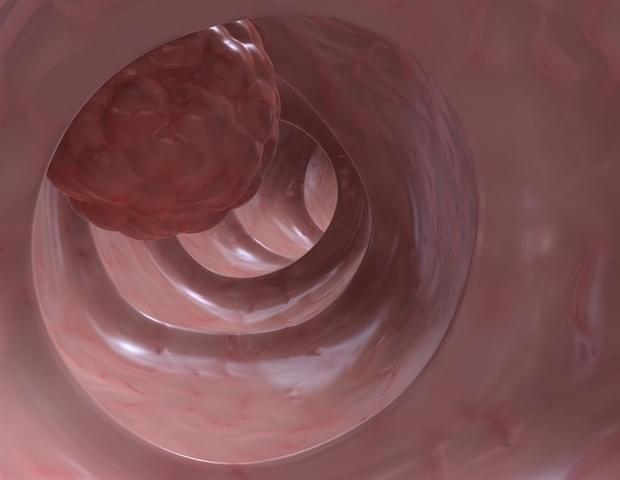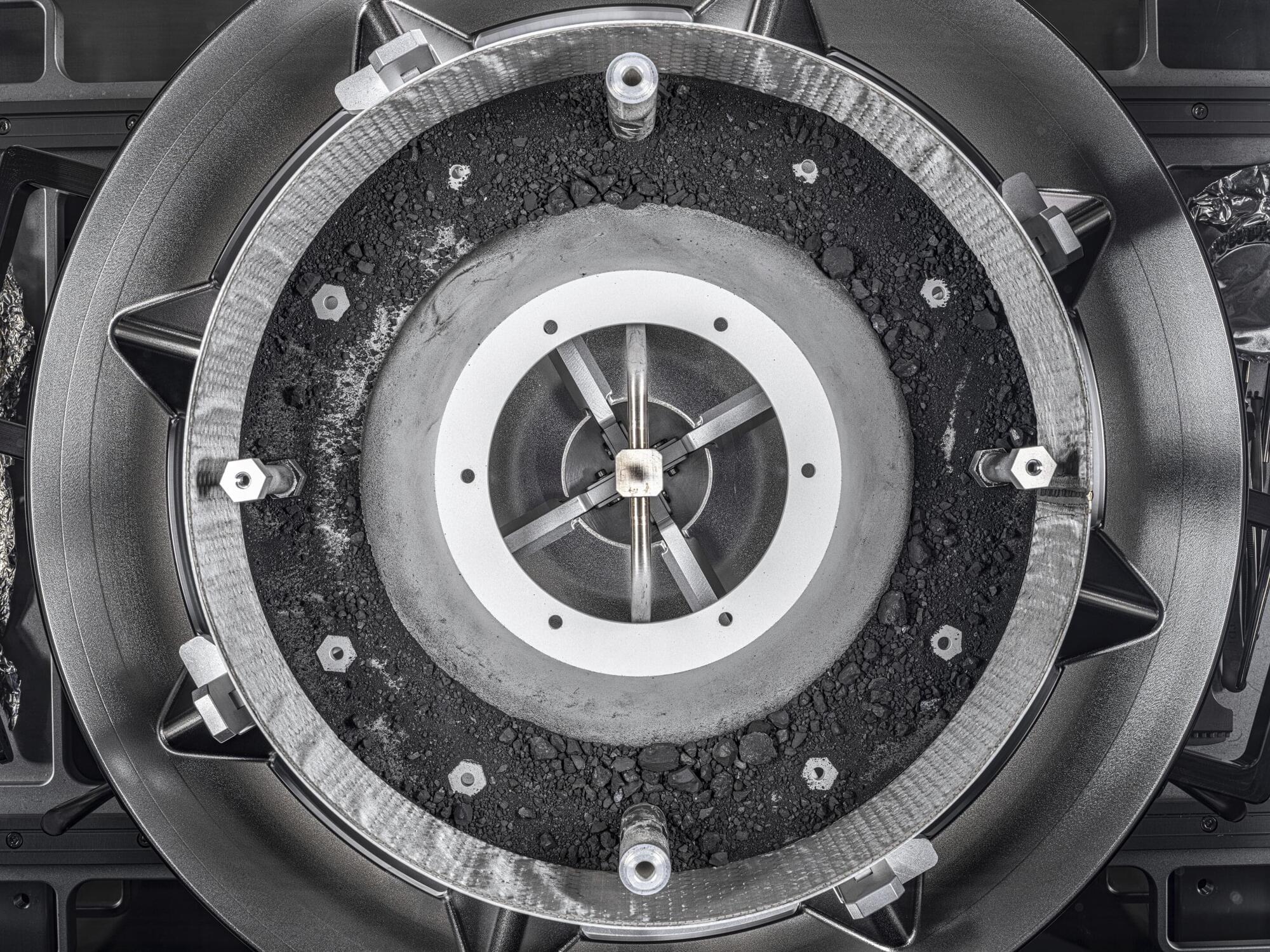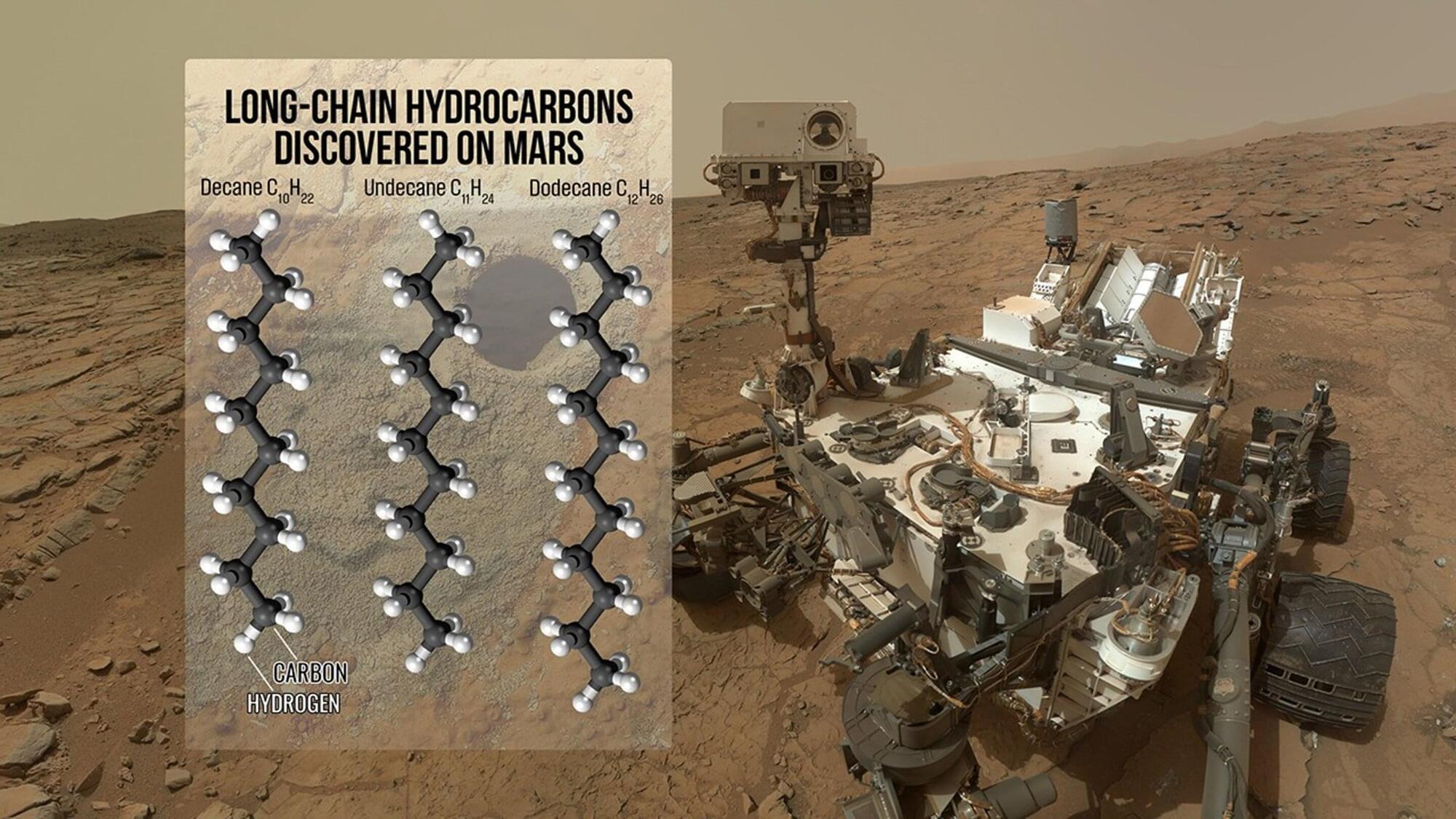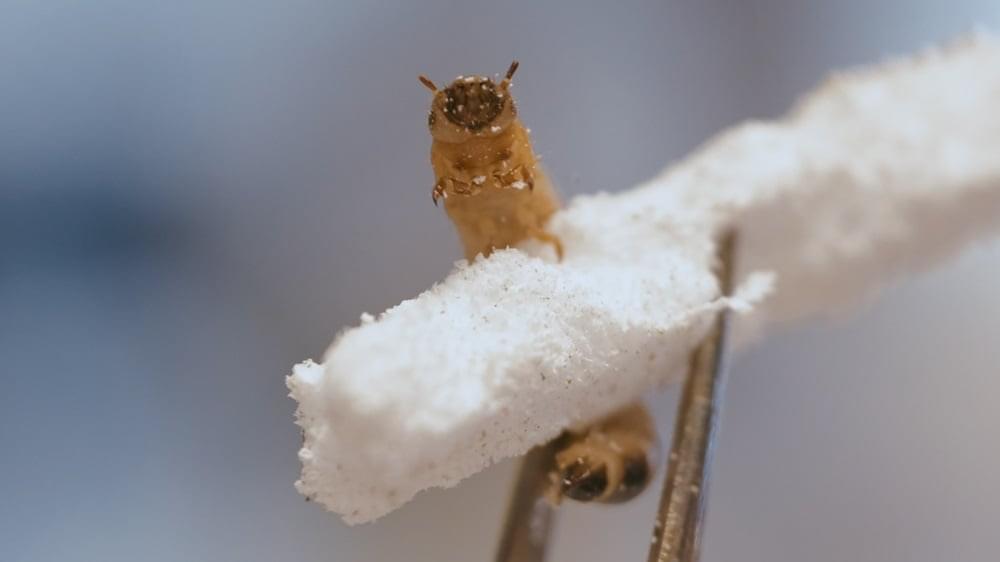Scientists analyzing pulverized rock onboard NASA’s Curiosity rover have found the largest organic compounds on the red planet to date. The finding, published Monday in the Proceedings of the National Academy of Sciences, suggests prebiotic chemistry may have advanced further on Mars than previously observed.
Scientists probed an existing rock sample inside Curiosity’s Sample Analysis at Mars (SAM) mini-lab and found the molecules decane, undecane, and dodecane. These compounds, which are made up of 10, 11, and 12 carbons, respectively, are thought to be the fragments of fatty acids that were preserved in the sample. Fatty acids are among the organic molecules that on Earth are chemical building blocks of life.
Living things produce fatty acids to help form cell membranes and perform various other functions. But fatty acids also can be made without life, through chemical reactions triggered by various geological processes, including the interaction of water with minerals in hydrothermal vents.
]]>
Professor Kwang-Hyun Cho’s research team has recently been highlighted for their work on developing an original technology for cancer reversal treatment that does not kill cancer cells but only changes their characteristics to reverse them to a state similar to normal cells. This time, they have succeeded in revealing for the first time that a molecular switch that can induce cancer reversal at the moment when normal cells change into cancer cells is hidden in the genetic network.
KAIST (President Kwang-Hyung Lee) announced on the 5th of February that Professor Kwang-Hyun Cho’s research team of the Department of Bio and Brain Engineering has succeeded in developing a fundamental technology to capture the critical transition phenomenon at the moment when normal cells change into cancer cells and analyze it to discover a molecular switch that can revert cancer cells back into normal cells.
A critical transition is a phenomenon in which a sudden change in state occurs at a specific point in time, like water changing into steam at 100℃. This critical transition phenomenon also occurs in the process in which normal cells change into cancer cells at a specific point in time due to the accumulation of genetic and epigenetic changes.
]]>
The Giza Pyramids have long been icons of ancient Egypt, but what's hiding beneath them might just turn history upside down. Recent archaeological finds are unearthing secrets that
]]>
Scientists Develop Hydrogel That Heals Wounds in Just 24 Hours! Researchers at UCLA have created a groundbreaking human skin-like hydrogel that repairs wounds 90% in just 12 hours and fully heals them within 24 hours!  This futuristic material mimics real skin, speeding up tissue regeneration like never before. While still in testing, this could revolutionize wound care, making slow healing a thing of the past. #wounds #superskin #skin #Health #healthylifestyle
This futuristic material mimics real skin, speeding up tissue regeneration like never before. While still in testing, this could revolutionize wound care, making slow healing a thing of the past. #wounds #superskin #skin #Health #healthylifestyle

Virtual reality could get more realistic thanks to scientists inventing an artificial tongue that can taste flavours, such as sourness and umami.
By Alex Wilkins
]]>
A team of scientists in France sustained an artificial sun for 22 minutes, which in the future could potentially provide unlimited clean energy.
]]>A team of scientists from Nanyang Technological University, Singapore (NTU Singapore) has developed an artificial ‘worm gut’ to break down plastics, offering hope for a nature-inspired method to tackle the global plastic pollution problem.
By feeding worms with plastics and cultivating microbes found in their guts, researchers from NTU’s School of Civil and Environmental Engineering (CEE) and Singapore Centre for Environmental Life Sciences Engineering (SCELSE) have demonstrated a new method to accelerate plastic biodegradation.
Previous studies have shown that Zophobas atratus worms – the larvae of the darkling beetle commonly sold as pet food and known as ‘superworms’ for their nutritional value – can survive on a diet of plastic because its gut contains bacteria capable of breaking down common types of plastic. However, their use in plastics processing has been impractical due to the slow rate of feeding and worm maintenance.
]]>
Life on Earth has always existed in the flux of ionizing radiation. However, fungi seem to interact with the ionizing radiation differently from other Earth’s inhabitants. Recent data show that melanized fungal species like those from Chernobyl’s reactor respond to ionizing radiation with enhanced growth. Fungi colonize space stations and adapt morphologically to extreme conditions. Radiation exposure causes upregulation of many key genes, and an inducible microhomology-mediated recombination pathway could be a potential mechanism of adaptive evolution in eukaryotes. The discovery of melanized organisms in high radiation environments, the space stations, Antarctic mountains, and in the reactor cooling water combined with phenomenon of ‘radiotropism’ raises the tantalizing possibility that melanins have functions analogous to other energy harvesting pigments such as chlorophylls.
]]>
Asteroid samples fetched by NASA hold not only the pristine building blocks for life but also the salty remains of an ancient water world, scientists reported Wednesday.
The findings provide the strongest evidence yet that asteroids may have planted the seeds of life on Earth and that these ingredients were mingling with water almost right from the start.
“That’s the kind of environment that could have been essential to the steps that lead from elements to life,” said the Smithsonian Institution’s Tim McCoy, one of the lead study authors.
]]>
